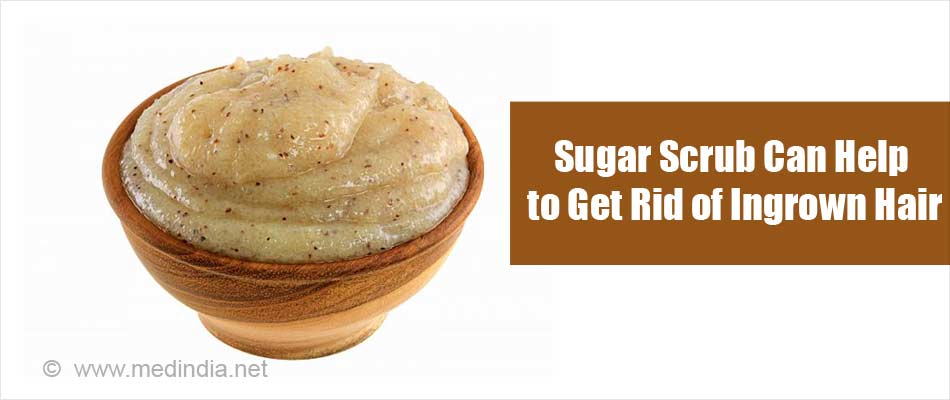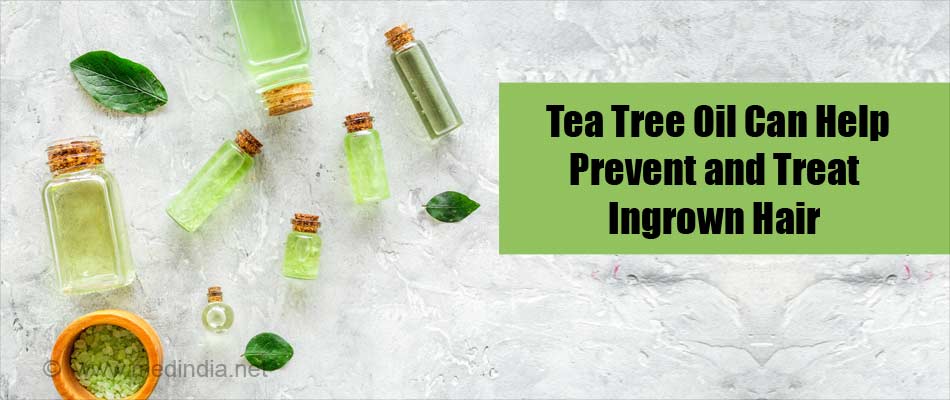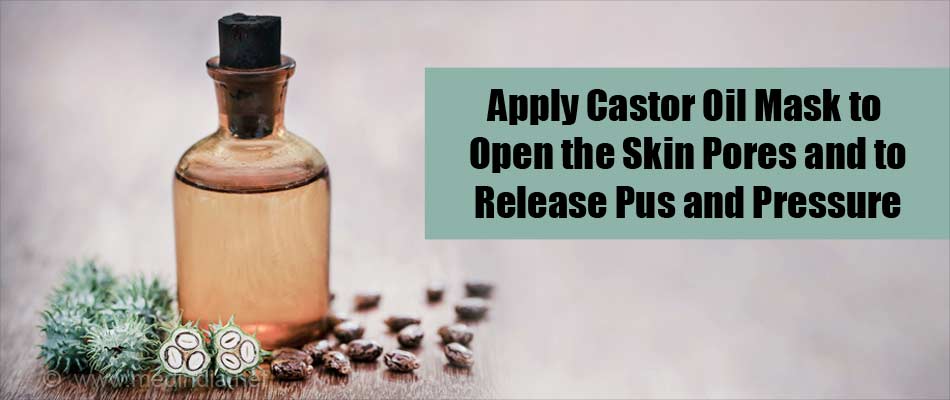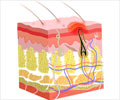- Ingrowing Hair - (https://www.ncbi.nlm.nih.gov/pmc/articles/PMC4902536/)
- Ingrown hair - (https://www.healthdirect.gov.au/ingrown-hair)
- Pseudofolliculitis Corporis: A New Entity Diagnosed by Dermoscopy - (https://www.ncbi.nlm.nih.gov/pmc/articles/PMC4387696/)
- Folliculitis - (https://www.ncbi.nlm.nih.gov/books/NBK547754/)
- Hormonal Effects on Hair Follicles - (https://www.ncbi.nlm.nih.gov/pmc/articles/PMC7432488/)
- Herbal Treatment for Dermatologic Disorders - (https://www.ncbi.nlm.nih.gov/books/NBK92761/)
- Aspirin in dermatology: Revisited - (https://www.ncbi.nlm.nih.gov/pmc/articles/PMC4693360/)
- Honey: its medicinal property and antibacterial activity - (https://www.ncbi.nlm.nih.gov/pmc/articles/PMC3609166/)
- Applications of Tea (Camellia sinensis) and Its Active Constituents in Cosmetics - (https://www.ncbi.nlm.nih.gov/pmc/articles/PMC6930595/)
- Coconut Oil - (https://www.hsph.harvard.edu/nutritionsource/food-features/coconut-oil/)
- Bioactive-Based Cosmeceuticals: An Update on Emerging Trends - (https://www.ncbi.nlm.nih.gov/pmc/articles/PMC8837976/)
What is Ingrown Hair?
Ingrown hair is a rare cutaneous disease caused by hair that curls back and re-enters the skin instead of rising up from it. Ingrown hair is also known as razor bumps and usually occurs after shaving, tweezing or waxing (1✔ ✔Trusted Source
Ingrowing Hair
Go to source).
Ingrown hair appears like little red goose bumps. Sometimes it may cause swelling, inflammation, pain and pus inside the bump. In women, ingrown hair is common on the legs, pubic area and armpits, whereas in men, ingrown hair often pops up on the chin, cheeks or neck after shaving (2✔ ✔Trusted Source
Ingrown hair
Go to source).
Occasionally, if a hair follicle is clogged from dead skin, the hair inside the follicle is forced to grow inwards or sideways instead of outward. Ingrown hair is not a serious issue; however it can be irritating, itchy and embarrassing.
What are the Causes of Ingrown Hair?
- Having very curly or coarse hair - This hair type is most prone to ingrown hair. When such hair is cut, the hair that grows back has a sharp edge, which can easily poke and curl back into the skin. It can also become inflamed and painful.
- Tugging at skin with a dull razor and excessive shaving- Scraping your skin excessively with a dull razor can lead to ingrown hair. This problem can be prevented by using a thick gel along with a sharp razor. Also razors are best used for 2 weeks before being disposed. Do not overuse a razor (3✔ ✔Trusted Source
Pseudofolliculitis Corporis: A New Entity Diagnosed by Dermoscopy
Go to source). - Inflammation of the hair follicle (Folliculitis) - Folliculitis is a common skin condition in which the hair follicles becomes infected. This may be due to bacteria, fungi or even infection from ingrown hair (4✔ ✔Trusted Source
Folliculitis
Go to source). - High levels of testosterone- The structure of hair follicle and hair cycle is highly affected by testosterone. This hormone causes excessive hair growth, which makes it more likely to get ingrown hair, especially after shaving (5✔ ✔Trusted Source
Hormonal Effects on Hair Follicles
Go to source). - Wearing tight clothing - The friction between the clothes and hair may pull on the hair and cause it to break. Also, if hair has been shaved then friction between the hair and clothes may cause ingrown hair.
- Shaving or waxing in the wrong direction - Experts suggests having in the direction your hair is growing is the best way to reduce incidence of ingrown hair.
Disclaimer: The home remedies suggested here are not a substitute for treatment by doctors. It is highly advisable to seek an expert’s opinion. All the remedies listed here may not be suitable for everyone. It is recommended to check for allergies or do a patch test before using the remedy.
Top 7 Home Remedies to Get Rid of Ingrown Hair
Home remedies used for ingrown hair remove dead skin cells on surface of skin, which clog hair follicles and help hair to grow in the right direction. They also hydrate skin, help to fight off infection and soothe the skin.
1. Sugar Scrub: Mix one cup of white sugar and half a cup of extra virgin olive or jojoba oil. You may also add ten drops of essential oil such as tea tree oil or lavender.

Take a small amount of the scrub and gently rub it in circular motions on the affected part till the sugar granules dissolve. Rinse off with lukewarm water. Continue to use twice weekly to ward off ingrown hair. Tea tree oil has antiseptic properties and lavender oil is known to hasten healing process and prevent scar formation. You can also add juice of one lemon if there are dark patches on skin.
2. Baking Soda: Mix one tablespoon of baking soda in half a cup of water. Dip a cotton ball into the mixture and dab it onto the affected area and let dry for five minutes. Rinse with cold water.
Mix together one tablespoon of baking soda, one tablespoon of ground oatmeal and water to make a paste. Gently rub the paste into the skin in circular motions. Rinse with lukewarm water and gently pat the skin dry.
Baking soda has a soothing effect on the skin. It effectively removes bacteria and dead skin buildup that can become lodged inside the pores and exacerbate ingrown hair. Since the grains in baking soda are smooth, they are very gentle on the skin and will not scratch or irritate the skin when used as a scrub (6✔ ✔Trusted Source
Herbal Treatment for Dermatologic Disorders
Go to source).

3. Tea Tree Oil: Add ten drops of tea tree oil to a cup of warm water. Dip a washcloth in the water and apply the washcloth or loofah (bath sponge) to the affected area. Allow the mixture to soak in and then gently exfoliate the area to make it smooth (6✔ ✔Trusted Source
Herbal Treatment for Dermatologic Disorders
Go to source).

Mix three drops of tea tree oil in one tablespoon of olive oil. Using a cotton swab apply this mixture directly on the area with the ingrown hair. Gently massage the area for a few minutes. Leave it on for ten to fifteen minutes and then rinse with lukewarm water. This should be repeated on a daily basis till the problem of ingrown hair is solved.
A tea tree oil soak will help open your pores, loosen up the ingrown hair, and reduce inflammation. The tea tree oil may be used to prevent ingrown hair and should be applied on the skin immediately after shaving or hair removal treatment.
4. Aspirin: Dissolve two aspirin tablets in one teaspoon of warm water. Then add one teaspoon of honey and half teaspoon of water to make a paste. Apply it to the ingrown hair. Leave it on for 10 minutes. Wash it off with warm water and then gently pat the skin dry. Follow this remedy once or twice a week as needed.
Aspirin contains salicylic acid which helps the top layer of the skin to shed its dead cells and reduce skin pore size. Its anti-inflammatory action helps to decrease redness and swelling of the skin (7✔ ✔Trusted Source
Aspirin in dermatology: Revisited
Go to source). Also, honey has natural hydrating, antiseptic, and antibacterial properties which add to the benefit when applied to the skin (8✔ ✔Trusted Source
Honey: its medicinal property and antibacterial activity
Go to source).
5. Salt: Mix one teaspoon salt in one cup of warm water. Soak a cotton ball and rub it lightly on the affected skin. Leave it on for a few minutes and then rinse it off with water.
Fill your bathtub with lukewarm water. Add one cup of Epsom salt to the water and soak in the bathtub for twenty to thirty minutes. Epsom salt bath is beneficial for those who have ingrown hair on legs or bikini area.
The tiny granules of salt help slough off the dead cells which may be causing clogged pores and draw the ingrown hair out by exfoliating the skin and cleansing.
6. Black Tea Bags: Moisten a black tea bag in warm water. Gently rub over the affected area for two to three minutes. Repeat several times daily as needed.
Steep a black tea bag in a bowl filled with hot water for about five minutes. Remove the tea bag from the bowl and add one teaspoon of coconut water to the tea solution. Apply this mixture with a cotton ball on the irritated skin. This can be done on a daily basis.
Black tea contains tannic acid, which reduces redness and inflammation and helps soothe the skin (9✔ ✔Trusted Source
Applications of Tea (Camellia sinensis) and Its Active Constituents in Cosmetics
Go to source). Coconut water contains lauric acid that helps to prevent against skin infections. It is also a natural cleanser and toner (10✔ ✔Trusted Source
Coconut Oil
Go to source).
7. Castor Oil: Spread two tablespoons of castor oil over the area affected by ingrown hair. Allow the oil to remain on the skin for at least fifteen minutes, and then gently wipe it away with a damp towel (11✔ ✔Trusted Source
Bioactive-Based Cosmeceuticals: An Update on Emerging Trends
Go to source).
Castor oil is helpful in opening up the skin pores. Once the pores are opened, pus is discharged, thus relieving the pressure and swelling inside the hair follicle.










